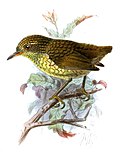Description
The adult Myiozetetes flycatcher is 16–18 cm (6.3–7.1 in) long and weighs 24–30 g (0.85–1.06 oz). The upperparts are olive-brown, and the wings and tail are brown with only faint rufous fringes. The underparts are yellow and the throat is white. Young birds lack the red-orange crown stripe of the adult, and have chestnut fringes to the wing and tail feathers. The best distinction between the species is the head pattern: Vermilion-crowned, social and rusty-margined flycatchers have strong black-and white head markings like the great kiskadee, whereas grey-capped and dusky-chested flycatchers have greyish heads, with a short weak eyestripe in the former.
Myiozetetes flycatchers sally out from an open perch in a tree to catch insects in flight. They sometimes hover to take small berries. They breed in cultivation, pasture, and open woodland with some trees, building a large roofed nest from stems and in a bush, tree or on a building. The nest is often constructed near a wasp, bee or ant nest, or the nest of another tyrant flycatcher. The nest site is often near or over water. The typical clutch is two to four brown or lilac-blotched cream or white eggs, laid between February and June.
This page is based on this
Wikipedia article Text is available under the
CC BY-SA 4.0 license; additional terms may apply.
Images, videos and audio are available under their respective licenses.





